Wide format solutions broaden horizons

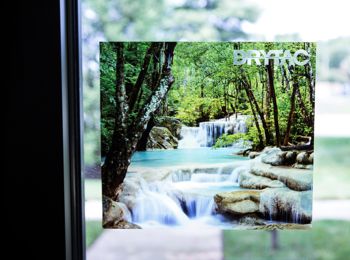
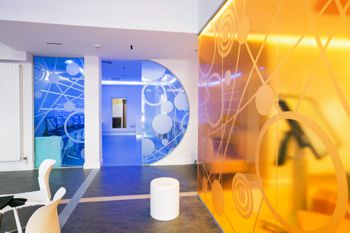
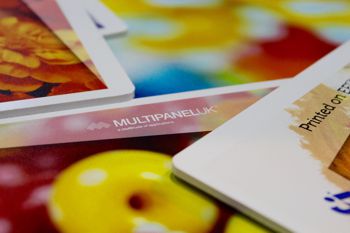
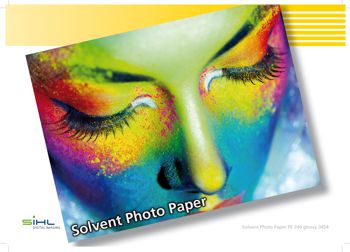
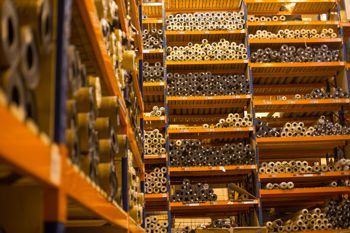
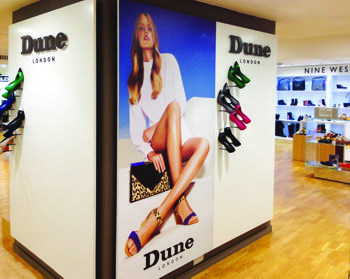

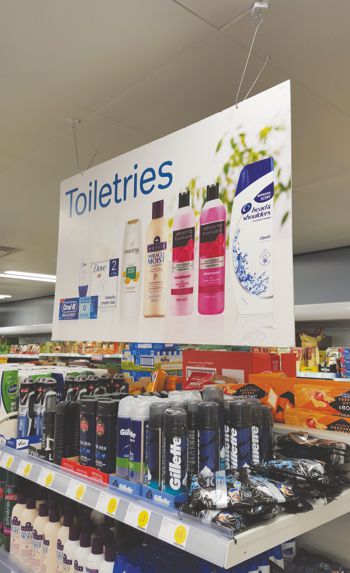
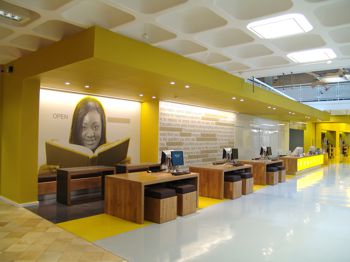
Sign makers use a variety of digital printable media to produce a wide range of display and signage products, making increasing demands on suppliers. We asked a number of leading industry players how they see this market developing and how they can support their customers.
Sign makers need to capitalise on some of the newest wide format print opportunities in today’s fast evolving industry by expanding their capabilities and penetrating new and emerging market segments. However, in order to achieve that, they have to contend with an increasingly crowded market place and strong competition
Sign makers need to capitalise on some of the newest wide format print opportunities in today’s fast evolving industry by expanding their capabilities and penetrating new and emerging market segments. However, in order to achieve that, they have to contend with an increasingly crowded market place and strong competition.
“As a company we serve a broad brush of industry sectors with digital printable media – in both roll and sheet format and sales are increasing at a steady pace,” says Chris Green of Antalis. “Sign makers are investing in new machinery in order to meet the demands of an increasingly diversified market. They need to do something different to stand out from their competitors by becoming even better at what they do or by broadening their product/service offering.”
At the same time, consumer demand is driving development of faster, more efficient solutions while innovative technologies are opening up new avenues for both customers and end-users. Greater demand for personalised print along with reduced turnaround times across the board means sign makers who can differentiate and branch out into new markets are set to benefit.
“The market is splitting more than ever into high street (B2C) and industrial (B2B) sectors,” according to Steve Broad, Drytac. “The traditional high street sign shop struggles to compete on the big contracts and the brand related work, with larger industrial print factories running ever bigger and ever faster equipment. We are seeing the smaller high street operation’s increasingly looking at ways to diversify and use their equipment to produce custom and one-off graphics. “This low-volume personalised product which can be sold direct to the consumer market (at higher margins) is being sought to offset business lost to bigger industrial print operations. On the industrial side, printers are increasingly looking to win through increased efficiency and the production of print that can be installed by the customer/retailer themselves.”
Soft signage
Progress in digital printing techniques has contributed to fabric and banner media enjoying a growth in the UK as Craig Brown, managing director of Signs Express explains: “Soft signage is still making excellent headway especially in Europe but we are seeing a growing interest in the UK. Advancements in digital printing technologies have enabled sign makers to easily adapt to the new media and offer enormous scope in both artistic license and varieties of substrates that can be used.
“Suppliers, especially those with a presence outside the UK, are making a concerted effort to bring soft signage products and techniques to the marketplace. For example, this year Spandex expanded its ImagePerfect portfolio to include seven new textiles for latex, solvent and UV printers.
“Although the UK market is behind the times in getting on board with this new trend, we are seeing an uplift in interest in interior office and commercial premises makeovers which involve a lot of custom wallpapers, decorative films and textured materials. This is perhaps indicative of the way the industry is moving.”
Innotech distributes a broad range of digital print media for wide format up to 5m wide for a variety of markets including vinyls, banners and textiles. Marketing manager Kieran Dallow is optimistic for the future of this media:
“Soft signage is here to stay and we can expect a massive increase in the options available for more long term and demanding applications. With the rise in demand for temporary graphic solutions, printable magnet will become more popular.”
An excellent example of forward-thinking suppliers is Amari Digital Supplies (ADS) who, in partnership with Amari Signs Display & Graphics, includes in its range of digitally printable textiles and fabrics the latest IMAGin Deco Silky and DecoFresco wall coverings from MACtac and the recently launched KernowJet Interiors wall covering product from Kernow Coatings. These are complemented by the latest addition to the Solvent Paper range of products from SIHL and the Mediatex range of products.
A white embossed non-woven textile, KernowJet Interiors features a specially treated and Bio-Pruf-certified topcoat that inhibits the formation of mold and mildew. It is HP Latex Inks-certified, has a Class 0 fire rating to BS: 476 Parts 6/7, is EN 259- 2-compliant and a lightfastness capability in accordance with the International Wool Scale BS/EN 20105/ISO 105 802 level seven of eight. In addition, the product is classified as a non-hazardous material to DIN 52900, based on ecological and safety assessments.
Magnetic and ferrous media
Increasing emphasis on wide format, flexible magnetic and ferrous sheet materials suitable for flat bed and roll-toroll printing with options for UV, latex, solvent, eco solvent and screen techniques, have resulted from key developments in print finishing technologies.
“The European market for magnetic and ferrous media has changed over recent years,” says Nils Hofmann, business development manager, Anchor Magnets.
“As the UK’s largest stockholder of flexible magnetic and ferrous sheet material it was important for both the range of media we offer and our capabilities as a company to adapt to meet the changing needs of our customers in the UK and across the rest of Europe.
“We’ve seen a steady rise in the number of clients who want their media supplied sheeted to size and ready to print with no further treatment required. Flexible magnetic sheet is typically used to create retail displays, POS, signage, indoor or outdoor displays and vehicle signs, making it a versatile material that can be used wherever an inherent ferrous surface such as steel is present. Alternatively, a ferrous surface can be created by applying plain-faced self-adhesive ferrous sheet to any smooth, flat or curved, non-porous surface.”
Wide format flexible ferrous media is an excellent product from which to create bold, vivid, interchangeable graphics displays, making it particularly suited for use in the retail sector.
“We’ve seen a consistent rise in demand for digifilm since its introduction and it is proving to be a popular choice for printers and retailers alike thanks to the excellent print finish it provides and the vibrancy and clarity of images,” says Hofman.
“Ferrous media is used in conjunction with a magnetic surface such as our plain faced self-adhesive supamag sheet which is applied to a smooth flat or curved nonporous surface and holds the printed ferrous media in place via its magnetic field. The thin nature of digifilm means additional layers can be added on top of one another without slipping, allowing displays to be quickly changed or updated with promotional messaging in seconds.
In addition, supaferro ferro sheet is a much more substantial product best suited to creating printed or white faced visual planning boards and notice boards which can receive a variety of products including printed magnetic sheet or office magnets for visual planning and holding documents.”
Rigid print media
Perspex Distribution has supplied rigid print substrates for almost 15 years and works with many of the UK’s largest wide format printers. As the capability of print machinery evolves so does the scope and availability of specialist print substrates.
“As the UK manufacturers and suppliers of Perspex Cast Acrylic, we offer unrivalled access to the UK’s largest range of cast acrylic available in hundreds of colours and effects all of which can be printed direct,” says Luke Martin who emphasises the importance of ensuring a reliable supply chain.
“We work closely with our manufacturing partners Palram which produces Palight PVC Foam and Palsun Polycarbonate and Multipanel UK, the only UK producers of aluminium composite. This local supply chain ensures optimum quality control, as well as product innovation, supporting print strategies that demand reliable supply of quality substrates for end users.”
Aluminium composites
Producing media that the end-user wants, in terms of quality, choice and ease of use ensures they come back again and again.
“Huge developments have been made in recent years in the range of aluminium composite panels used widely in applications from hoarding boards and signage to exhibition stands and shop fitting,” explains Luke Martin. “Alupanel ALite has been specifically produced to give wide format printers a hassle-free experience. It is clean, easy peel film and its smooth, flat surface ensure the print surface is pristine for print, while the specially developed digital surface ensures an improved ink adhesion and the brightest printed colours.
“Manufactured in the UK, it includes a superior core and aluminium grade providing increased rigidity while reducing the aluminium skin thickness. Innovation means a new addition to the range with a white core has been produced specifically for printed graphics requiring a neater exposed edge.
“Material innovation is being used to reduce print production processes. Multishield, for example, is a composite sheet with a galvanised steel skin to produce a panel, which is magnetically receptive and can be produced with both a digital print surface and a white board surface. Previously printers would need to laminate multiple layers to a rigid sheet to create a magnetic whiteboard surface costing them time and money, however this can now be eliminated.
“Perspex Distribution strives to keep ahead of the market and feed back issues faced by printers to their manufacturers so products can be developed that offer long-term performance. Static build-up - the bane of digital print - is something we have addressed with our lightweight Palight Print Anti-static Digital PVC Foam board. In addition, bright purple, easy-peel film provides pre-print surface protection and notably when printed it continues to repel static meaning the material stays cleaner for longer.”
Easy repositioning
A further way to support customers is to provide media that are easy to use, install and remove - a vital part of delivering what sign makers need to remain competitive.
“Over the past few years Drytac has developed several easy to use products that work for both the consumer and the industrial markets,” says Steve Broad.
“Products (such as ViziPrint films for window graphics and SpotOn and Retac) can all be easily installed by the end-user. These materials are aimed at increasing overall print efficiency; they have been engineered to be applied and removed multiple times with no loss of adhesion and no residue and can help the printer to literally ship product in a tube, allowing them to reduce costs to the customer and ultimately win more business.”
ADS’ KernowJet Interiors non-woven textile can be applied using standard heavy-duty PVA adhesives and purposely removed to leave no residue and with no surface damage. Tear-resistant, it can be liberally repositioned to ensure perfect registration with the substrate. Once applied, it will not expand or contract to ensure non-visible panel joints and can be cleaned using a mild detergent.
Furthermore, the 3454 PE 240 addition to the digitally printable range of Solvent Papers from SIHL (supplied by ADS) provides high-definition and photographicquality prints that are both water- and abrasion-resistant.
“This product combines a dimensionally stable base material with a robust surface coating and claims a faster drying time compared with similar paper products, while its remarkable luminosity capability provides a superior colour brilliance and sheen,” says ADS. The Mediatex range of digitally printable and PVC-free textiles has certified flame resistance in accordance with internationally recognised assessment standards. With a low ink consumption capability for enhanced cost effectiveness, these products are water-, stain- and tear-resistant with no creasing or curling in application.
In addition to product development, being able to compete in this crowded market means looking at smarter ways of adding value to a customer’s investment, giving them something extra that will help them improve productivity in their business and remain loyal to a brand.
Sharing expertise
Businesses which are confident in their product, are more than happy to share information with customers, building loyalty and repeat business and this is clearly evident in the signage industry.
“In a growing market at Antalis we have the benefits of scale and regional distributors to be in a position to offer a product range to meet customer demand and tap into all possible areas,” explains Chris Green. “In addition, we recognise the importance of customer loyalty and supporting them and our Digital Academy is a key component of this approach. We try to put ourselves into our customer’s shoes and consider: what do they need to know, what kind of information and expertise should they have at their fingertips in order to offer the best service possible to their customers?
“We continually review the number and type of course available. Non-product related, they address all kinds of business and technology issues and over the next 10 years we plan to set up academies in other countries; around 80% of our product is sourced from Europe.”
This emphasis on sharing knowledge and expertise with customers is evident by Signs Express approach to supporting customers.
“Education is a big focus for us currently; this includes informing our clients on what is achievable and what solutions are out there, as well as interacting with our supply chain to get training in both new products and refreshing our knowledge on the old,” explains Craig Brown.
“As their popularity has increased we have become experts in interior design, moving into bespoke printed and textured wallpapers, decorative films and signage that is unique and outside the norm. Our designers are very flexible and our teams have the knowledge required to tell clients the best way to create their desired effect.”
Innotech has become a distributor for a clever piece of software for sign makers, providing a tool designed to further increase their efficiency and productivity.
“A big problem for most sign makers is the cost of estimating in the first place,” says managing director Phil Walker. “Spike is an innovative estimating device that works off your smartphone, allows sign makers to go on site, take a photo and approximate measurements from the ground without the use of equipment such as cherry pickers or ladders and can estimate the job very fast.
“What it won’t do is replace the actual measuring when you’ve got the job but it will give you an accurate estimate within a 3% error margin so you can quote with confidence. It will allow you to superimpose your graphic designs on the image so you can create a mock-up to go with your estimate. Software like this is a very powerful tool to help sign makers quote with great accuracy, keep their estimating costs down and present their companies in a professional way.”
Environmental responsibility
Caring for the environment has in the past presented something of a challenge for the sign industry but as time goes on more and more excellent recyclable digital print media are available for many applications.
“Improving environmental responsibility starts with the design process at the point of selecting which media will be used,” says Antalis’ Chris Green. “We produce a fully recyclable 100% cellulose sign and display board for example, which unlike composite, does not have to go to landfill. We have to get the message across to our customers that this material is fit for purpose, it does the same job - but doesn’t have to cost more. The fact that it is recyclable is a plus point, a revenue generator as there is an expense incurred by the end user if at the end of its life the board has to go to landfill. It ticks all the boxes in helping supplier, sign maker and end user to be environmentally responsible.”
Innotech places much emphasis on its environmental responsibility as Kieran Dallow explains: “We are always looking for ways to introduce more environmentally friendly materials – which is why we’ve launched the Envirotech PVC-free range which is 100% recyclable.”
Solvents, which have been heavily used by the sign industry, are becoming a thing of the past, thanks to the development of new and innovative products that do the job just as well, if not better.
“At Drytac we always look to satisfy the environmental issues that this industry has been criticised for, including PVC and solvents,” comments Steve Broad. “Drytac Europe takes its responsibility toward the environment very seriously while still producing materials that can withstand heavy weather and different climates. We have made significant investments in our UK manufacturing facility to ensure that we and our suppliers comply with environmental regulations, which has led to many Drytac products being specified by high street retailers. For example, over the past few years we have introduced many PVC-free products including a line of ECO-friendly laminating films and PVCfree digital wallpapers in our DecorTac range of wall finishings.
Looking to the future
With Brexit in the news every day, and conflicting views on how it will affect UK industry, how is the uncertainty affecting the digital printable media sign-making sector?
“We take one day at a time,” says Chris Green of Antalis. “As far as we are concerned, business will continue and we are ready for any eventuality with the aim of keeping supply chains open and moving. With a strong presence in Europe, South America and South Africa, we have a vested interest in making sure we can deliver what our customers want, when they want it.”
And what of the end user – what will they be looking for in the next 5-10 years and how can suppliers meet those needs?
“We are seeing greater demand for bespoke products from many of our customers and we believe that this will continue,” explains Drytac’s Steve Broad. “Mass customisation is a trend that isn’t going away regardless of the industry in which you operate. We have a creative team with great ideas but have found that many of the best ideas come from customers themselves. We listen to what’s happening in the marketplace and work diligently to provide customers with unique products that give them an advantage in what is a highly competitive industry.
“We are a family-owned company that manufactures here in the UK and as such Brexit will have very little impact on our ability to respond quickly to our customers wants and needs. We believe that we’re well positioned regardless of what happens on the political stage.”
Keeping an eye on technological advancements will serve to keep the industry fresh and innovative as Craig Brown explains:
“Signs Express will continue to grow as demand hasn’t waned, even in light of the Brexit vote. We have ambitious targets for growing our network and seeing a real demand across the country for companies that offer a one-stop shop with a solution for any problem. Sign makers are an inventive bunch and always find ways of using materials in unique ways that sometimes weren’t the intention of the original producer. I keep my eye on technological enhancements, particularly in 3D printing, which has come on in leaps and bounds in the past couple of years.
“With the latest being the Mimaki 3DUJ- 553 UV LED printing solution unveiled earlier this year, making 3D printing look more than ever like the next big thing on a commercial scale. A printer such as this, in an affordable and readily available form would enable the production of colourrealistic signs, prototypes and parts while eliminating the need for time-consuming hand painting or wrapping of printed objects. “This printer, along with the development this year of the Canon OCE Colorado 1640 which uses UVgel ink technologies that are predicted to transform wide-format roll-to-roll printing, has been a big one in terms of technological advancements in the signage industry. The Signs Express network is excited to see what will be introduced to the market next year and how these can enhance our existing operations.”
A final word of caution from Innotech’s Kieran Dallow: “With changing ink technologies and printers diversifying more and more, taking their printing capabilities to the limits, media suppliers are going to have to innovate faster to keep up with these demands.”
